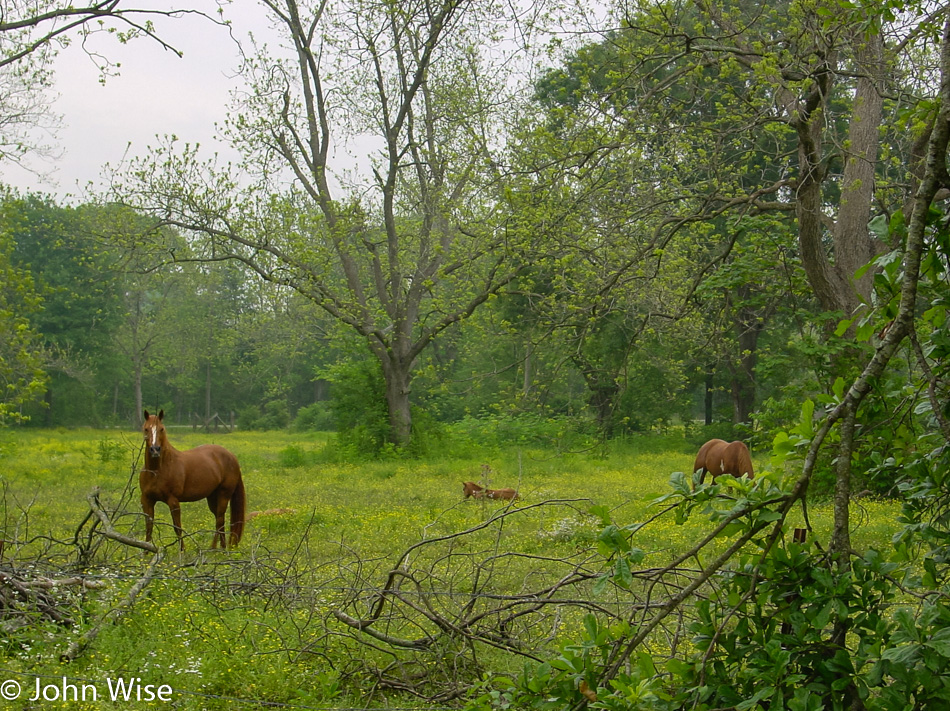
Awake again before dawn and on the move, we stop to admire some horses in their pasture. Why doesn’t this look like we’re next to a freeway? Because we are not. From here on, except when necessary, it is on Caroline to help us negotiate our way with the best route that allows us to avoid larger roads and highways. We may be on the move quite a bit but what we are looking at go by is equally important as to those exceptional places we have chosen to stop at on this journey.
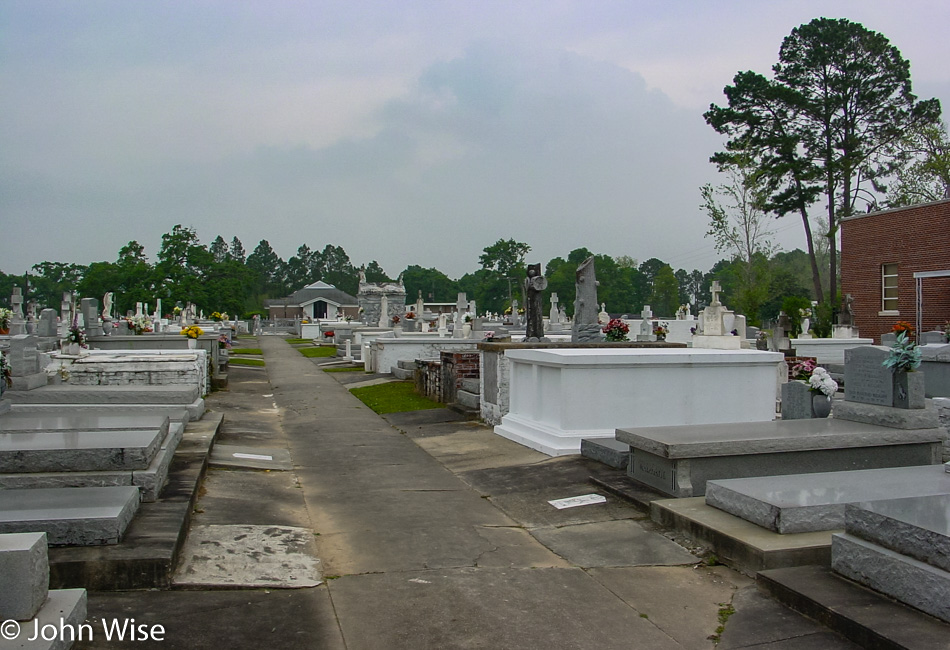
This visit to the above-ground Broussard Cemetery was not scheduled, but it is a curiosity as none of us have ever seen such a thing. With the high water table and the low elevation here in the southern part of Louisiana, it helps to keep the dead out of the muck as they slowly turn to muck themselves. Maybe it’s morbid, but we do remember on at least one occasion when flooding in this state has released several caskets from their entombment becoming makeshift canoes taking their cargo to other places in the afterlife. I’m not exactly sure if that constitutes a spiritual journey.
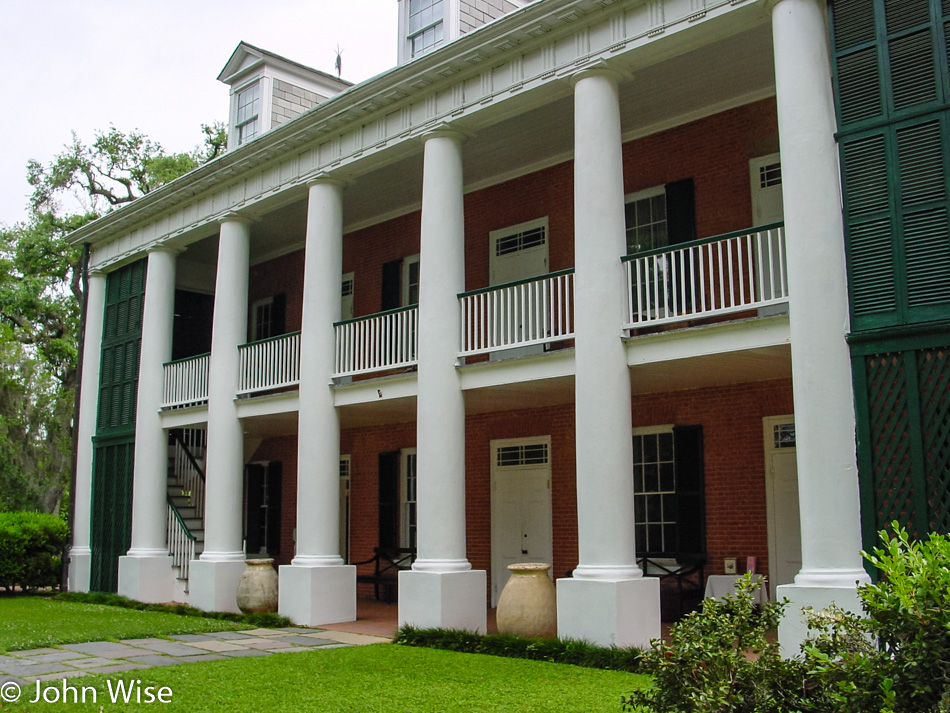
Welcome to Shadows-on-the-Teche in New Iberia, Louisiana. This is a historic antebellum home and center of a plantation that at one time was home to 164 enslaved people, not the home, just the plantation. While it is certainly a part of our American history, there’s something peculiar about visiting a place that was, in effect, a concentration camp for the majority of people who lived next to a palace that housed their owners. What I find particularly unsettling is that we only see the beauty of the white owner’s life and gardens, a kind of celebration of a “better” time.
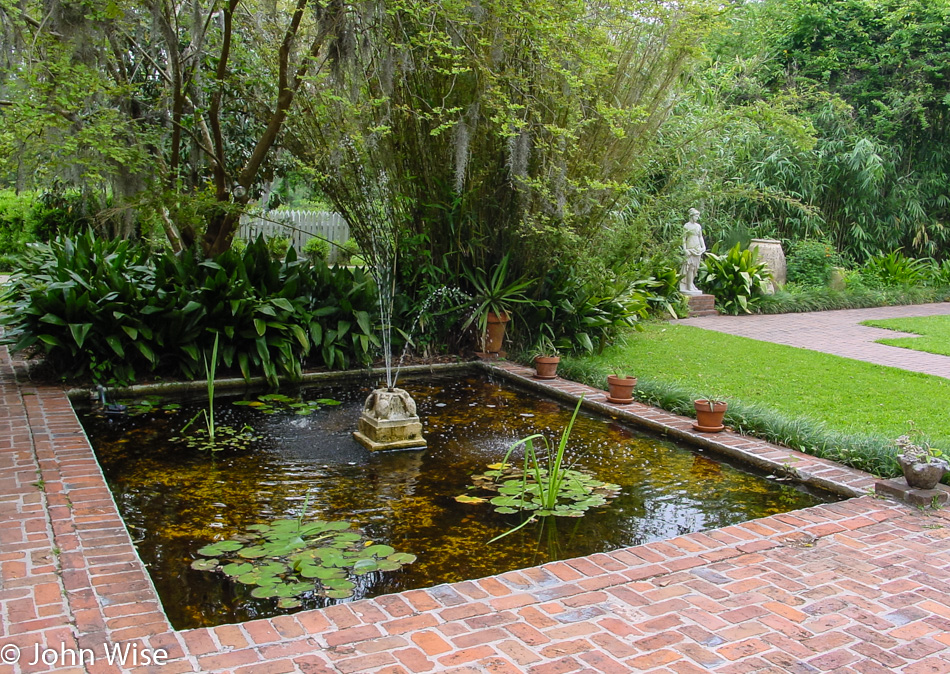
The garden abuts Bayou Teche, and today, the grounds are but a fraction of the size they were back when David Weeks built this between 1831 and 1834. Just as they were moving into their 158-acre plantation, David Weeks succumbed to an illness he’d been battling and died in August 1834 while seeking medical help. The Weeks Family originally held 3,000 acres in the area. Ultimately, the land was sold off to support descendants; too bad it wasn’t carved up and given to the slaves who worked these lands.
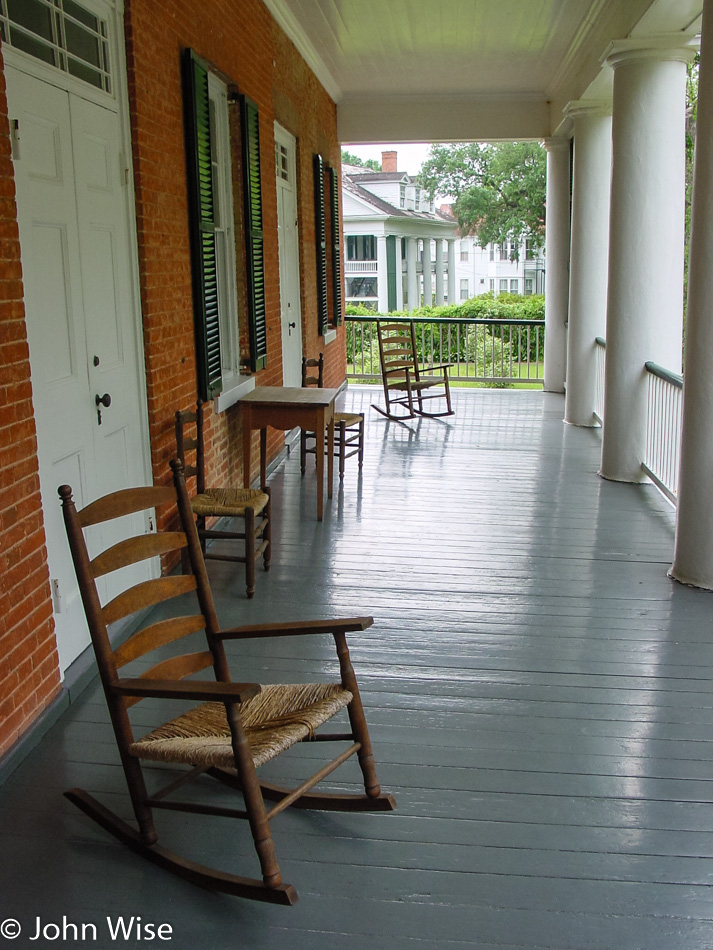
It costs $7.00 to visit Shadows-on-the-Teche, and tours are guided only. Our guide today was a terrific lady I’d estimate to be about 75 years old with a perfect southern twang in her voice.
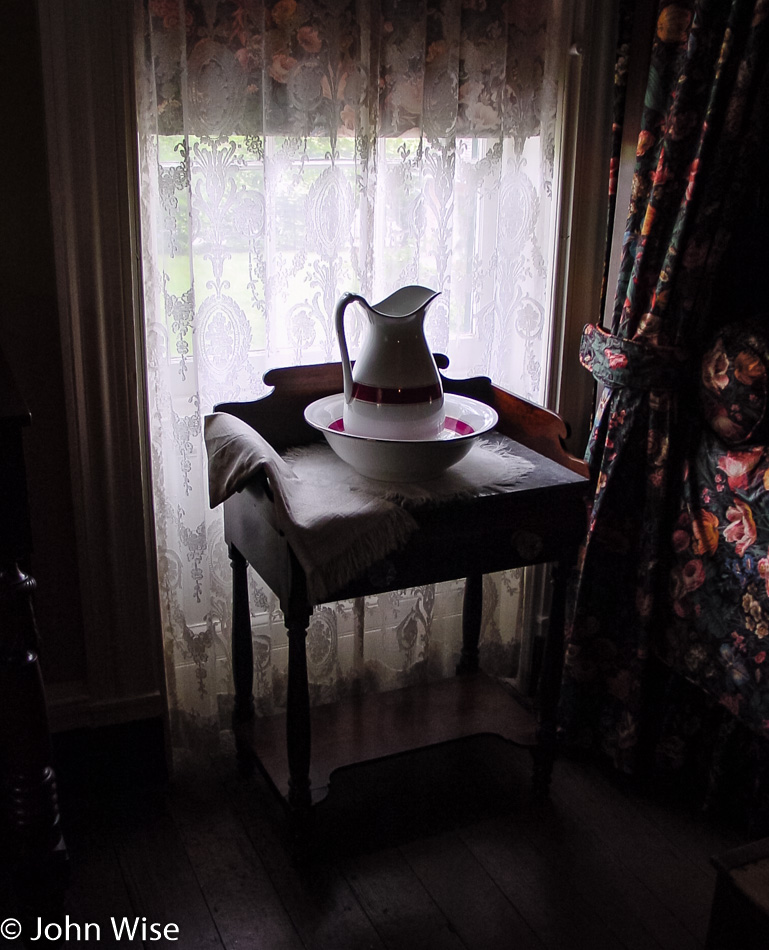
The home is well preserved, with much of the furniture, clothing, letters, paintings, and dishes being the originals that were with the house more than 150 years ago. In that song of a drawl, our guide tells us about the Weeks family and that “they were packrats y’all.” Our guide’s knowledge and enthusiasm for introducing us to the history of the family was nearly more interesting than the home itself.
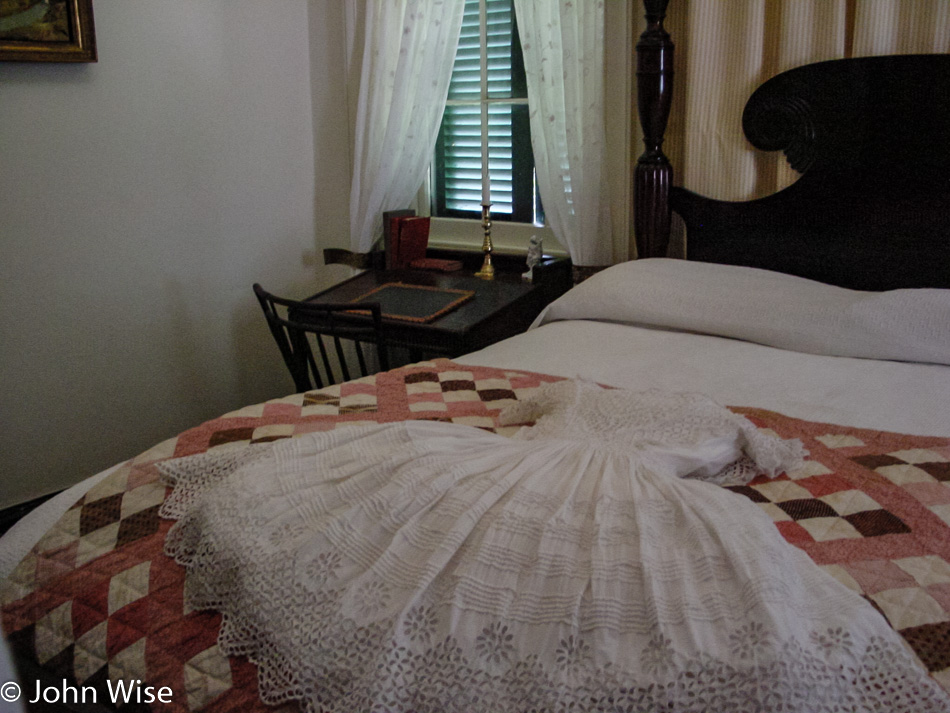
I’m conflicted in wanting to admire the belongings and things that were considered luxuries at the time, as they could only be had due to the spirit-breaking labor of what must have been more than one thousand slaves that fell under the family’s control. This is only a guess because with these 158 acres having about one slave per acre, I can only imagine that the other 2,842 acres must have had at least a good fraction of as many slaves as the main property.
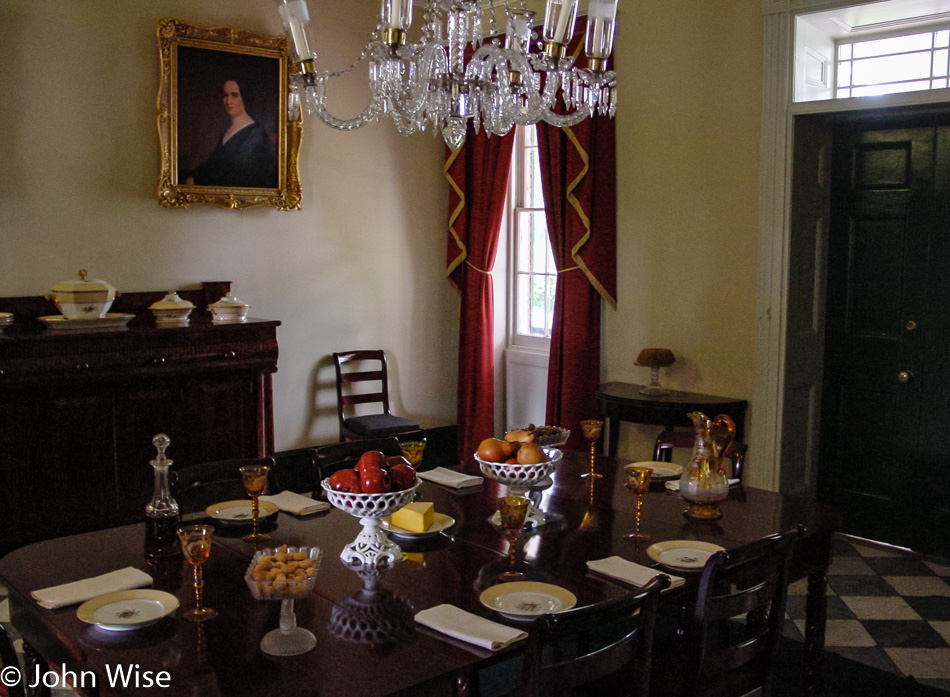
The words and attitudes that echo in these rooms are abominations to human decency, but like we are apt to do as a country, it seems to best serve us to ignore our warts and deprivations inflicted upon others. Let’s celebrate the whitewashed version of history that lets everyone feel good about themselves, except those who are to this day second and third-class citizens and deserve far more than being pushed to the margin and told to make the best of it.
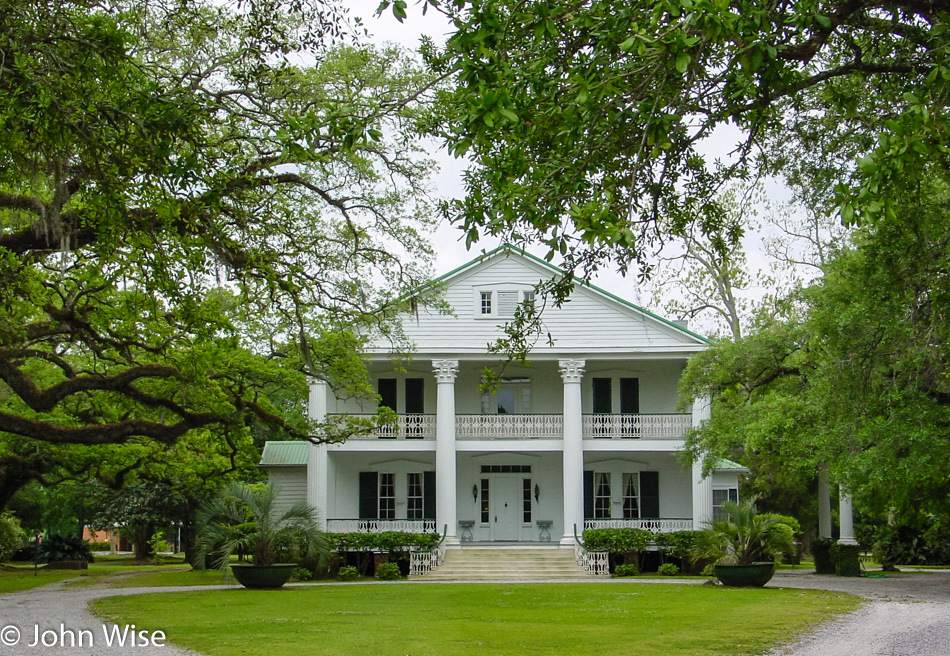
Colonnades, Spanish moss, and live oaks certainly give the area a touch of beauty.
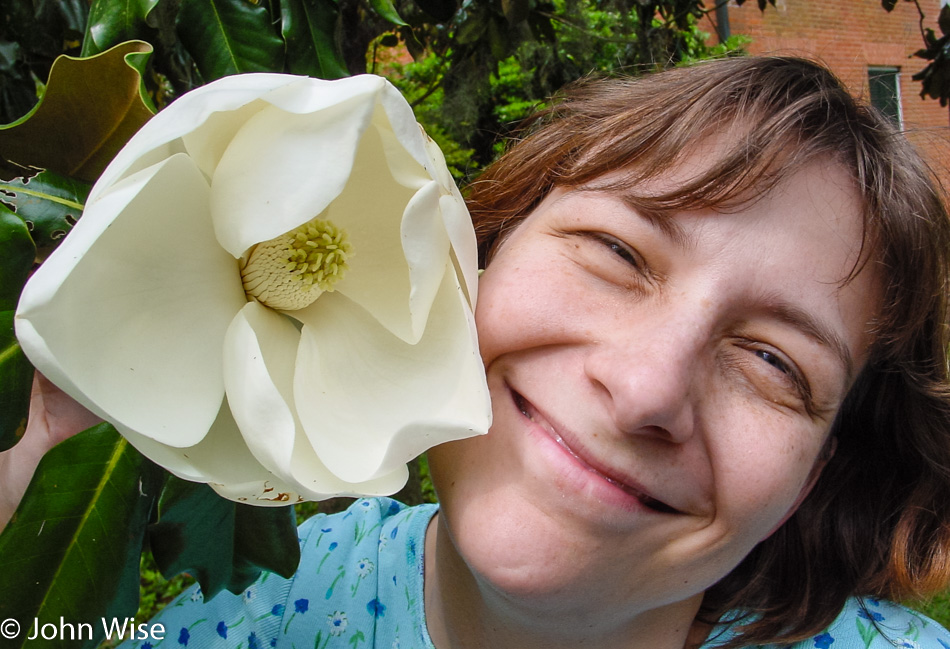
Add a magnolia flower and my wife’s sometimes goofy face, and the world is perfect.
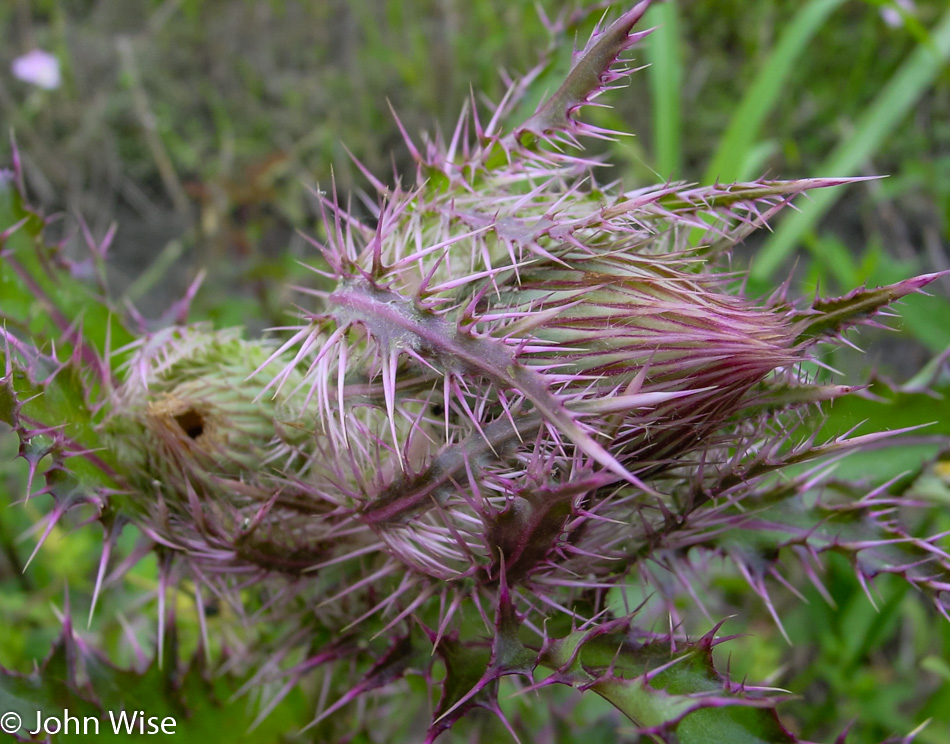
Then again, there is that issue of the thorny nature of her husband nearly best represented by a thistle, which is becoming a bit of a theme here on my blog: click here and here.
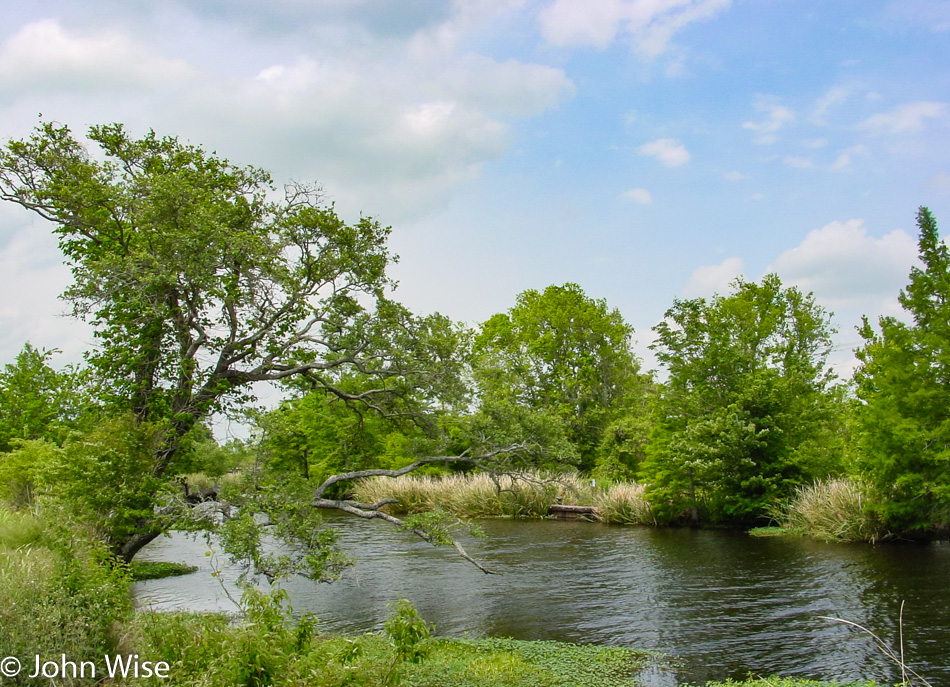
One last glance at Bayou Teche, and soon we’ll be at scheduled stop number two in Houma, Louisiana.

We have arrived at 1921 Seafood in Houma. This restaurant holds a special place in our hearts because it was three years ago, on Day 17 of our first cross-country trip, that Caroline and I stopped here by chance and fell in love with what we felt Louisiana cooking should be like. And wouldn’t you know it, we are too early today; they don’t open till 4:00, and it’s only 2:00. But before disappointment could set in, they asked what we might want and said they’d accommodate us. Seeing me about to take a photo of Jutta and Caroline, the woman who was helping us, handed the ladies this sign.
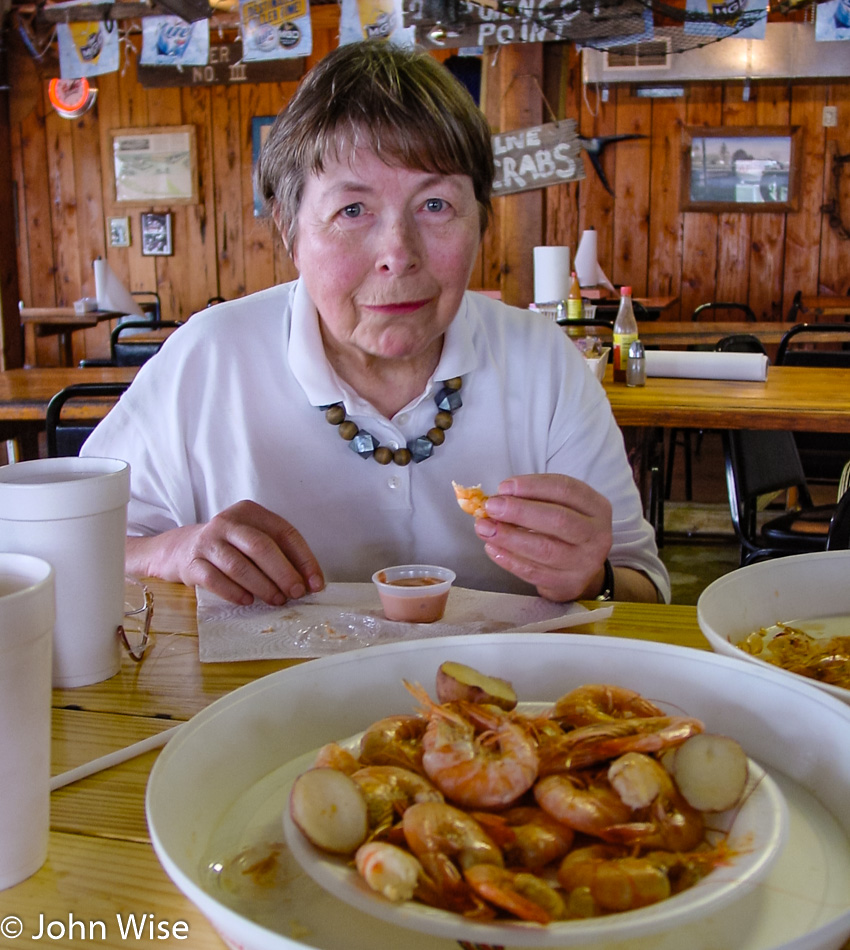
I don’t think Jutta knows what to make of this dish of boiled shrimp, red potatoes, and corn on the cob. She’s always kind of distant when trying new foods that are foreign to her experience until she realizes that, in fact, we wouldn’t steer her wrong, though she didn’t like the clam chowder we introduced her to back in 1996.
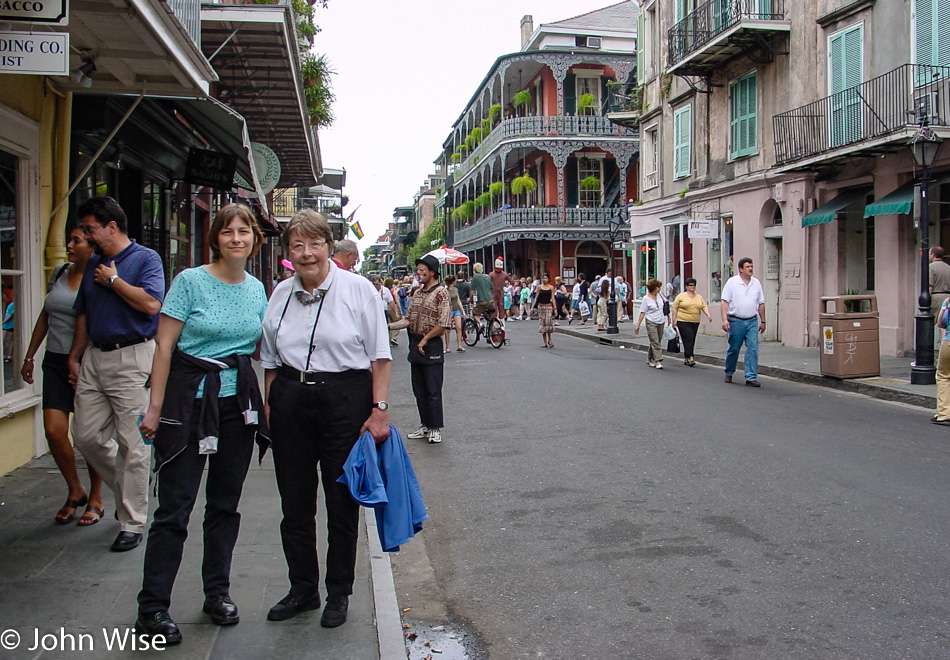
So here we are in the Big Easy as it is often known: New Orleans, Louisiana, as it’s known officially. The home to Mardi Gras and enough stories about drunken debauchery to fill volumes. The streets are old, the curbs broken, the bricks discolored, cast iron hangs over us, and the sky is overcast; our mood is not. New Orleans is like stepping into a dream. A city of mythic proportions that we could easily spend days exploring.
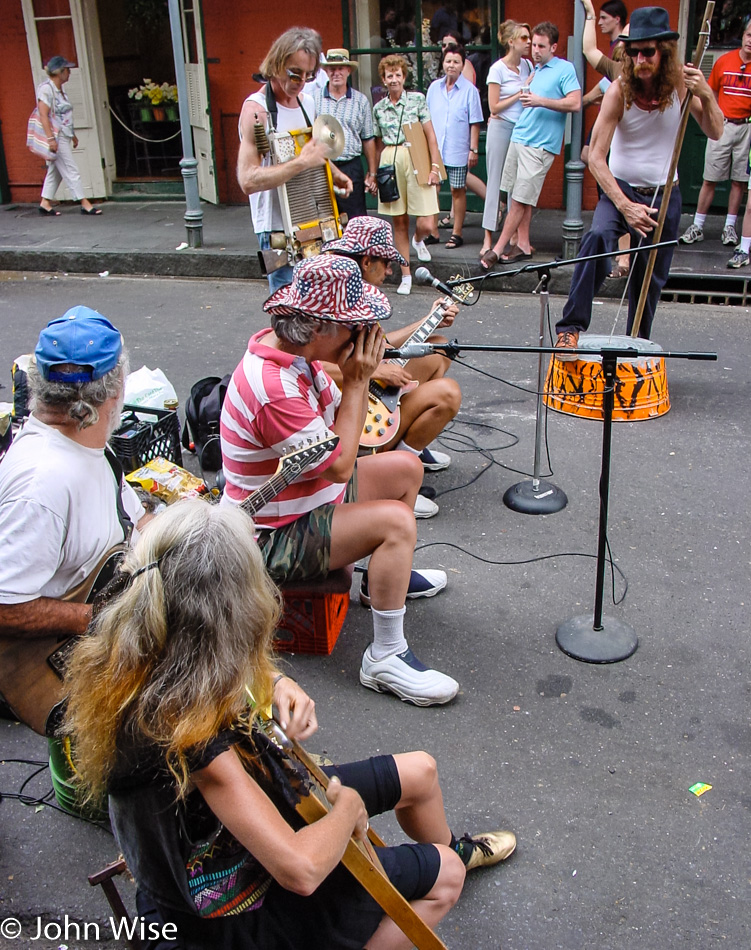
Our self-guided wandering tour starts in a nondescript little side street that we’ve been told leads to the more famous streets of the French Quarter. We first turn onto Chartres Street and take a left to Toulouse Street, followed by Royal Street and then another side street to another and then another street. Street musicians dish out humor and tragedy with a bit of music to accompany the one-liners lamenting being kicked out, cheated on, drunk, and broke. Cast-iron balconies with their hanging plants and flours have this looking just like it does on TV. Another turn and more musicians, but this band is serious, as evidenced by twin battling washboards; they are playing music you want to have fun with.
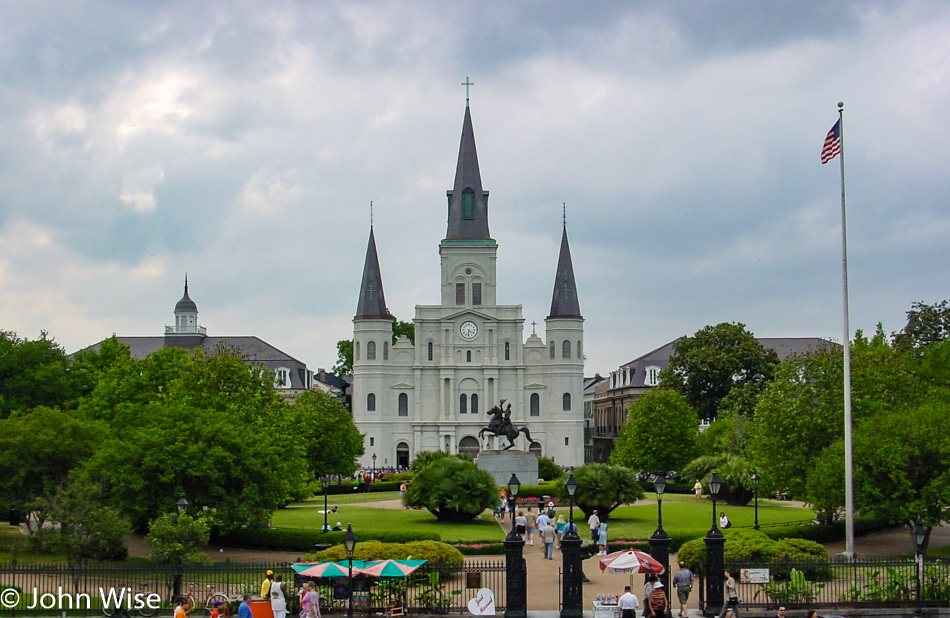
We walk toward Saint Louis Cathedral and Jackson Square after seeing on one of the local maps that the Mississippi River is directly across from the square. To our surprise and great fortune, we stumble upon Café Du Monde, which also happens to be right here on the edge of the square. The café is world-famous for its beignets which are a popular food here in New Orleans, as our line stretches behind and around and back again. Waiting for an order of those famous square French doughnuts heavily dusted with powdered sugar and a cup of their chicory coffee only takes minutes. We step out on the sidewalk in front of the café and do our best not to wear the powdered sugar.
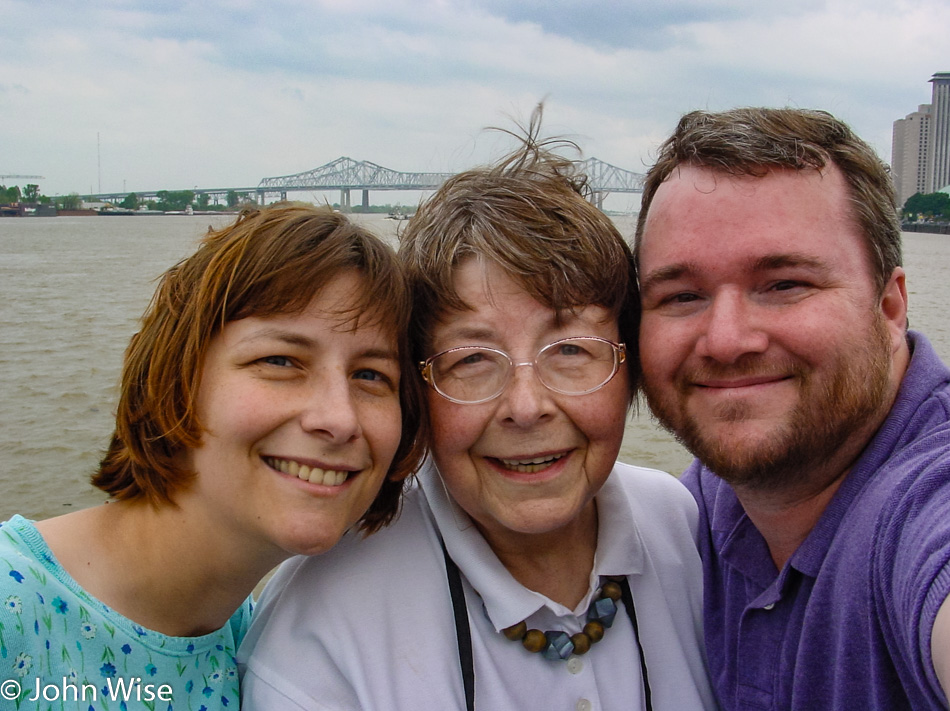
Using the Mississippi River in New Orleans as our backdrop, it seemed like a great place for a selfie to note our short 3.5-hour stay in this historic city.
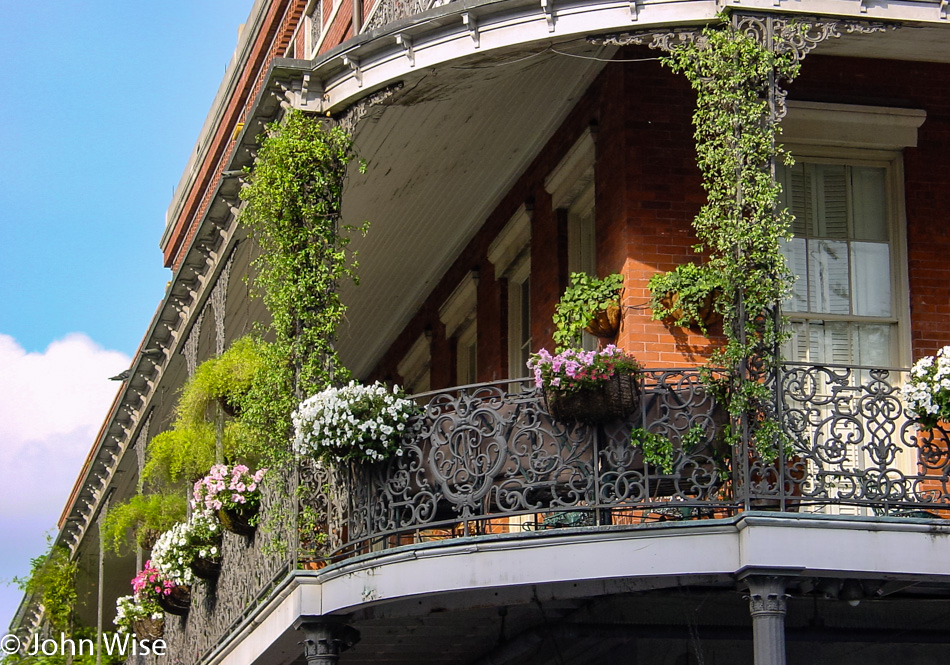
Back through Jackson Square and over to the most well-known street in New Orleans, we are on the infamous Bourbon Street. The street is closed to through traffic as the pedestrians represent too large a hazard, especially after these partying revelers have had few drinks.
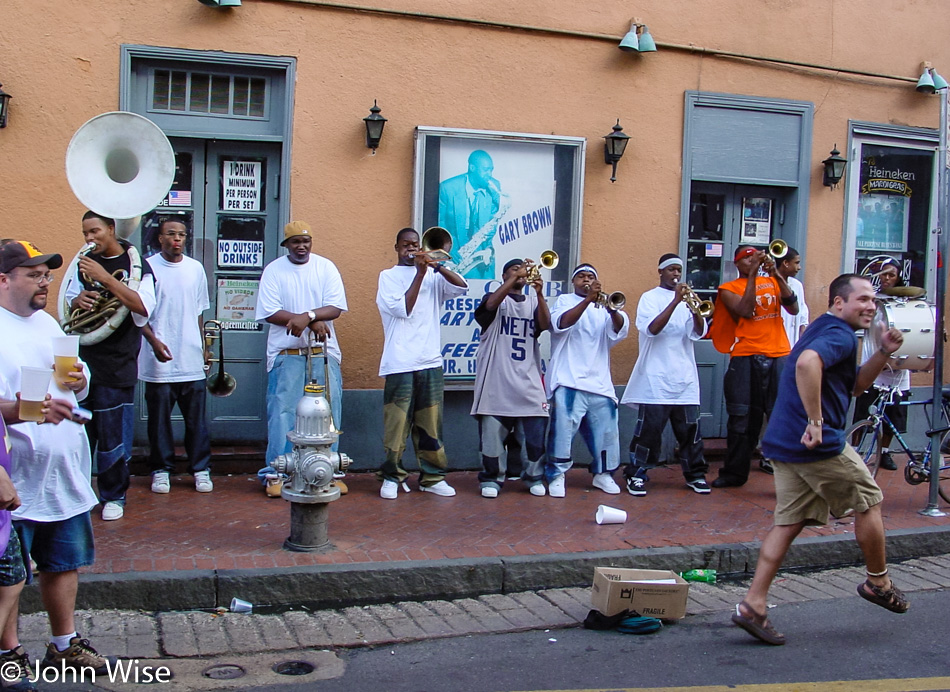
This is not a street to take your family, and although Caroline points out a t-shirt that speaks to my inner road-raging idiot that elicits a solid laugh from her and me, it would most likely make a majority of parents uncomfortable. People visiting Bourbon Street are gravitating towards the music, and for good reason. In this group of ten guys, the brass section is stomping out some foot-slamming groovy tunes that are jammin’ with a hot tempo.
Turning the corner, we fall into a strange silent hole, or so it seems, after leaving the festive Bourbon Street. Walking along we take in the architecture before finding our car to leave this city. As happy as we were to be here, we are also happy to be leaving. We are in vacation mode, and for us, that means life has slowed down, and we are out to appreciate the beauty of things. New Orleans demands you jump on the truck and join the parade; we, on the other hand, want to hug trees.
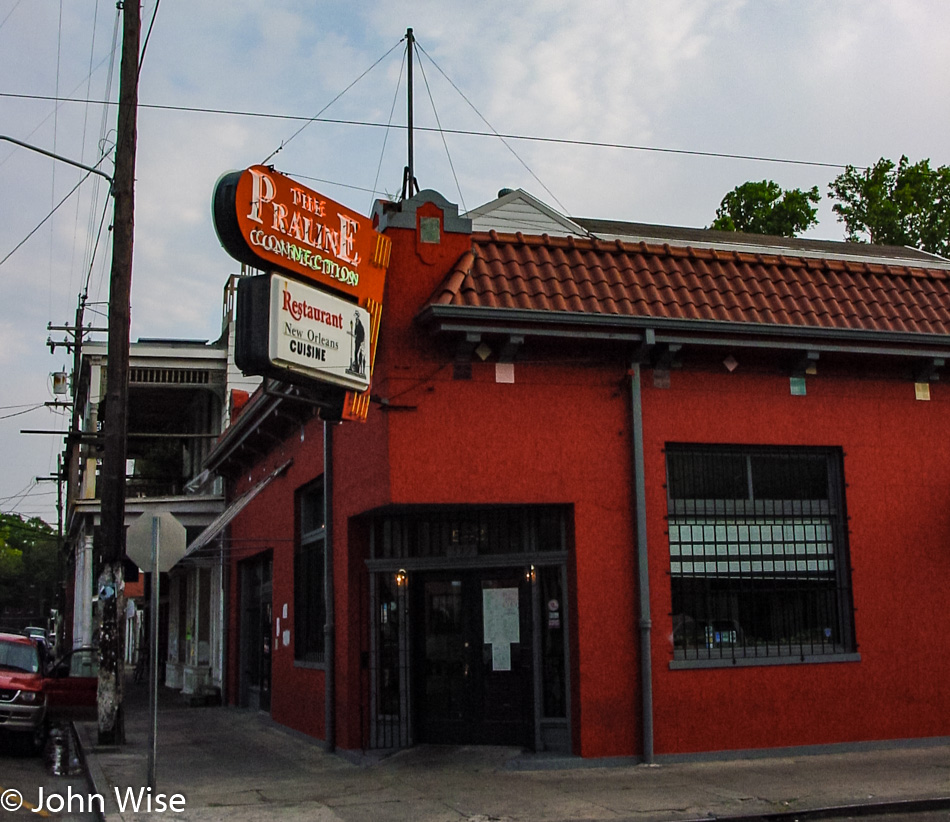
On the way out of New Orleans, we fumble, trying to find a little red corner building with a sign that reads, The Praline Connection. The internet proves to be an invaluable tool in identifying tidbits of treasured information that, short of a personal recommendation, we would otherwise not learn of. The Praline Connection is one of those super finds. The claim by the author I had read prior to leaving Arizona is that these were the best pralines ever. While I double-parked next to a busy corner, Caroline ran across the street to secure our confectionery booty. Jutta doesn’t ask why we are stopping; she must know by now that my surprises never fail to deliver a smile. Once Caroline is back with the goods, an exclamation of ‘sagenhaft’ comes from the back seat. The word rolls off her tongue with an elongated first syllable and a pronounced last syllable. Sagenhaft is German for incredible. These pralines are seriously sagenhaft.
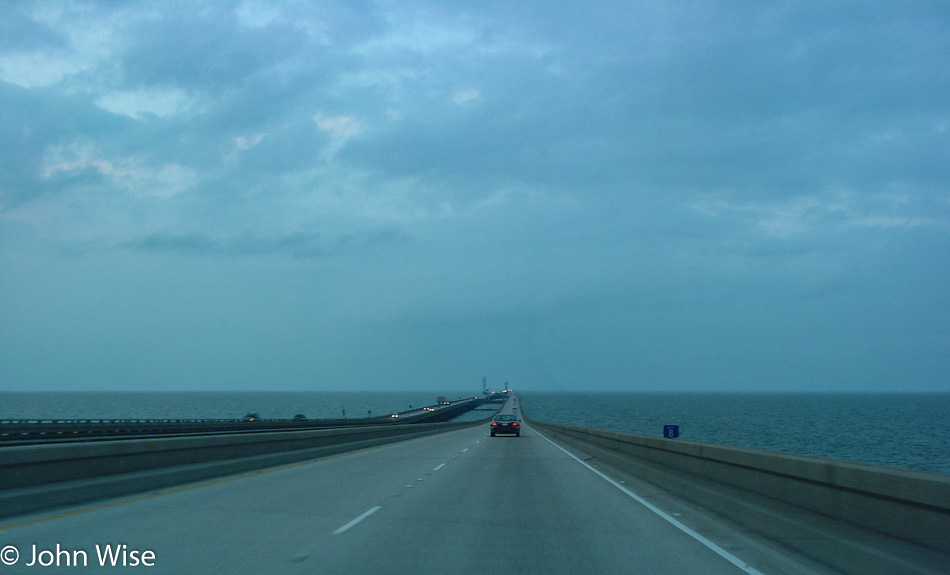
The Lake Pontchartrain Causeway is a 24-mile-long bridge, making it the longest in the world. It takes us half an hour to cross it, traveling north to join the I-10 east, taking us to Pascagoula, Mississippi. Tonight, we will stay at the La Font Inn, our second Patel Motel on this trip. A Patel Motel is one of the many motels across America owned by a Gujarati family. Hailing from the state of Gujarat in India, the Patels are the Gujarati equivalent of America’s Jones or Smith. Due to the phenomenon of so many roadside Middle of America motels now being owned by so many Patels, they have affectionately become known as “Potels.” They are also usually the cheapest motels in town.
Update: La Font Inn was torn down in 2010 and replaced by a Hilton Garden Inn.